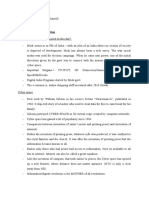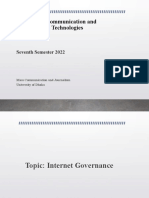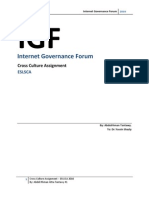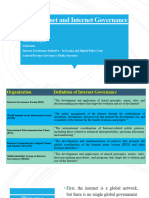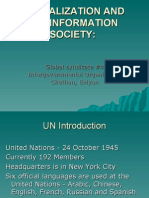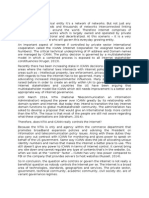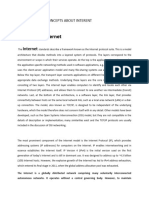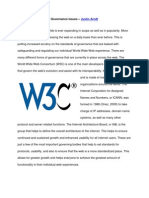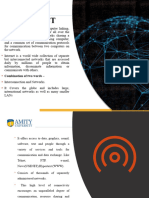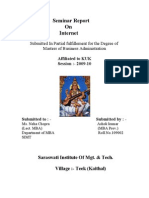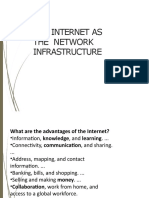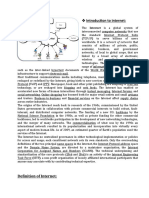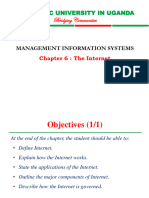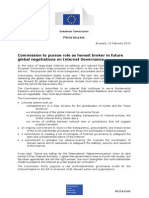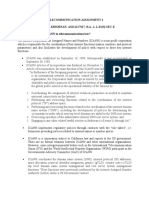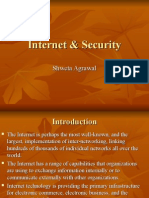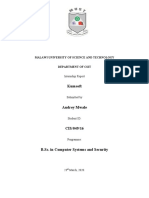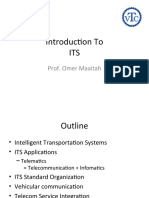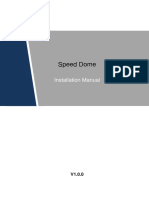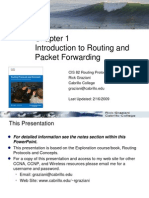0% found this document useful (0 votes)
162 views5 pagesIntroduction to Internet Governance
The document discusses internet governance and the multi-stakeholder approach. It provides examples of organizations involved in internet governance, including ICANN, IANA, IETF, W3C, ITU, and the regional internet registries. The multi-stakeholder approach to internet governance is advocated because it allows input from governments, businesses, technical experts, and civil society. Net neutrality principles are also discussed, which state that internet service providers should allow equal access to all legal content and applications.
Uploaded by
Audrey MwaleCopyright
© © All Rights Reserved
We take content rights seriously. If you suspect this is your content, claim it here.
Available Formats
Download as DOCX, PDF, TXT or read online on Scribd
0% found this document useful (0 votes)
162 views5 pagesIntroduction to Internet Governance
The document discusses internet governance and the multi-stakeholder approach. It provides examples of organizations involved in internet governance, including ICANN, IANA, IETF, W3C, ITU, and the regional internet registries. The multi-stakeholder approach to internet governance is advocated because it allows input from governments, businesses, technical experts, and civil society. Net neutrality principles are also discussed, which state that internet service providers should allow equal access to all legal content and applications.
Uploaded by
Audrey MwaleCopyright
© © All Rights Reserved
We take content rights seriously. If you suspect this is your content, claim it here.
Available Formats
Download as DOCX, PDF, TXT or read online on Scribd
/ 5


